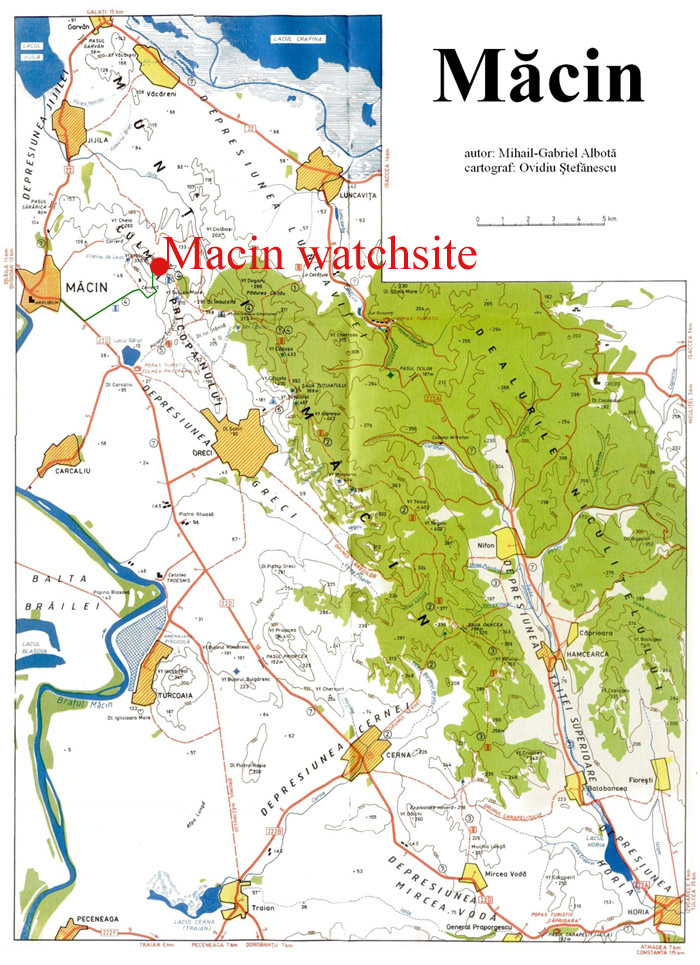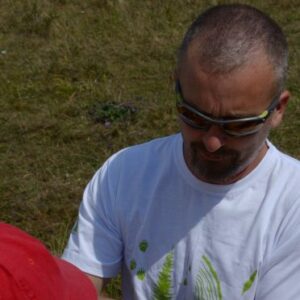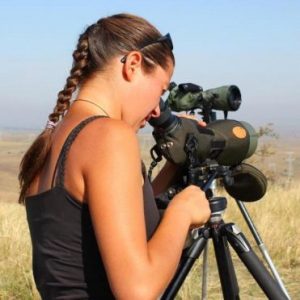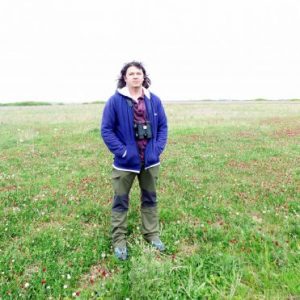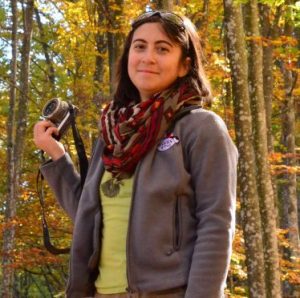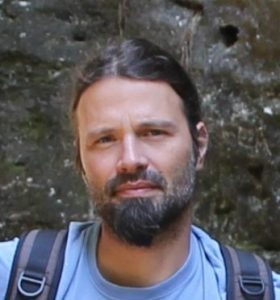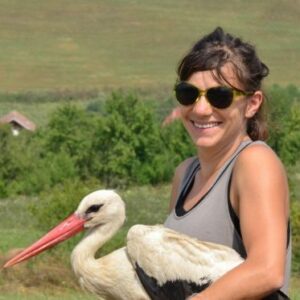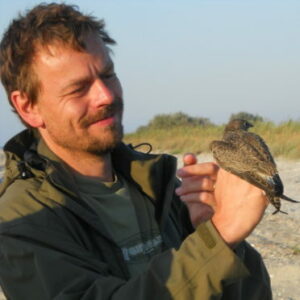General information
The main goal of the Muntii Macin raptor migration watchsite is to determine the timing and magnitude of the migration and to develop methods for a sustainable long-term migration count. Using our database and working in cooperation with other watchsites, especially with those from the Via Pontica route, we can elaborate conservation strategies for threatened or endangered raptor species. Apart of this the Macin Watchsite offers good opportunity for on site educational programs. This will help many young conservationists to improve their knowledge about raptors, migration and will educate the general public as well.
The Macin Mountains are situated in the North of Dobrogea, between 28 07’ and 28 27’ eastern longitude and 45 21’ northern latitude. Parallel peaks in NW-SE direction form the landscape and the total area of these mountains is about 500 Km2. The Danube River forms the western and northern boundaries, in between we can find the Jijila and Carpina lakes while the southern limit is the Babadag Highland. The eastern boundaries are the Niculitel Hills with the Luncavita and Taita valley in between. Although the highest peak, Tutuiatul, is 467m the elevation is just about the same. This gives an impressive landscape to these old mountains. The landscape here offers excellent conditions for thermal formation on sunny days and strong updrafts in windy days, especially when the wind is from NE or NW. The agricultural fields and pastures offers good feeding conditions and the nearby forest is used as roosting place for the late arriving birds.
The countpoint
The migration count at the Macin Watchsite is made from the Pricopan Highs, 10 minutes walking from the campsite. It is situated at 28 11’ eastern longitude and 45 15’ northern latitude, at 344m above sea level. The participants used their own camping equipment and food supplies were provided form Macin town. The campsite is accessible by car and it is about 5 Km from the town. For this you must leave the main road and use a service road to the stone quarry from where you have to turn right and follow the old service road that leads to the closed stone quarry. The access to the count point is possible only by feet. The terrain is pretty rugged and the elevation from the campsite is about 150m.
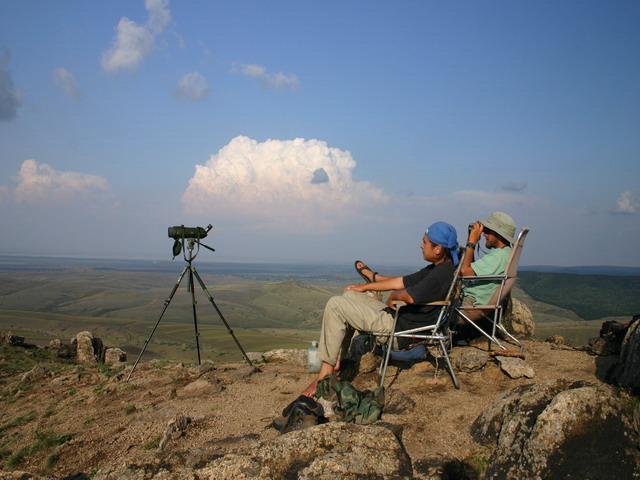
The observations
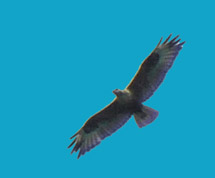
The camp start each year at 15th of august and lasts til 24th of october. Observations are made with 10×50 binoculars and 30x 60 telescops daily from 9 to 19 hr. The meteorological (temperture, wind intesity, wind direction, cloud coverage, precipitation) and migration data’s (species name, species number, age, sex, hight of flight, direction of the migration, distance from countpoint, intensity of migration) are recorded on standard sheets used in other migration watchsites (Gibraltar, Hawk Mountain).

